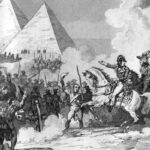We explain what an empire is and what its main characteristics are. Also, what some of the most important empires in history were like.
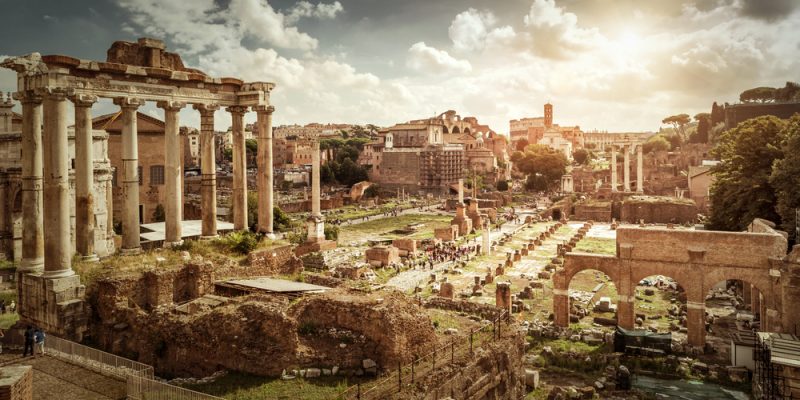
What is an empire?
An empire is a state political unit that exercises control over an extensive territory and diverse populations that it subjugates through the use of force. In some cases, the territories are incorporated into the empire as colonies, which are administered in a differentiated manner.
One of the main characteristics of an empire is the imposition of taxes, a political structure and its culture on the subject populations. However, at various times there were empires that granted great freedom to the conquered populations and sought their economic and social growth.
Throughout history, there were numerous empires that became great powers and influenced the politics, economy, and culture of their time. The forms of government and the characteristics of imperial domination were transformed over time.
Among the most notable empires in history are:
- Ancient Age. Roman, Chinese, Mauryan and Persian Empires.
- Middle Ages. Byzantine, Carolingian, Arab and Mongol empires.
- Modern Age. Ottoman, Spanish and Portuguese Empires.
- Contemporary Age. British, Russian, Austro-Hungarian, German and Japanese Empires.
- See also: Dynasty
Characteristics of empires

The different empires that were formed throughout history had characteristics defined by their own historical context, the political forms of the time and the cultural features of their civilization. However, some elementary issues that characterize all empires can be identified:
- Concentration of power. All empires had a centralized organization of power. This could imply the existence of an emperor with absolute authority who ruled over the entire empire or, in other cases, a division of power in which the central authority shared its functions with a parliament or a legislative body. In all cases, power is in the hands of the imperial state and the conquered populations are subject to its mandate.
- Subjugation of populations through force. Empires expanded their territories through military conquest and the use of force. In most cases, the annexation of a colonial territory was a consequence of the war between the central empire and the population that, when defeated, was subjected.
- Collection of taxes. The objective of expanding the territories of an empire was always linked to taking advantage of the resources of the conquered territories and imposing the payment of tribute to the subject population. The collection of taxes varied in different cases: they could be delivered in money, in work or in kind (raw materials, agricultural products or merchandise).
- Political and administrative structure. Empires required a large political and administrative organization to be able to govern large areas of territory. The political structures of imperial states often included different types of officials with different levels of power. Generally, trusted imperial governors or administrators were located in the territories most valued by the empire. The same thing happened in those regions that tended to rebel or sought greater autonomy.
- It may help you: Emperor
The Roman Empire

The Roman Empire was one of the largest and most important of the Ancient Age. Roman civilization emerged in the Italian peninsula around the 8th century BC. C. Through the conquest of neighboring towns, the Romans expanded their territory in the following centuries, but maintained a republican political organization dominated by the aristocratic class that made up the Senate.
In the 1st century BC. C., the Romans began to have an imperial organization. Consul Octavio managed to get the Senate to grant him different powers and concentrated in his person the maximum authority of all government functions.
The Roman Empire is considered one of the largest and most important empires in the history of the West and the world. He was responsible for the spread of Latin and the founding of many of the great European cities, such as London, Milan, Vienna or Lyon.
Over the centuries, the empire's policies on conquered territories changed, but, in general terms, an open policy was maintained with respect to subject populations. In many cases, taxation consisted of the payment of taxes. To maintain the government of such an extensive territory, with many lands far from the capital, the Romans organized the empire into provinces, and their governors were sent from Rome.
On the other hand, the empire It was established as a multicultural State that gave great freedom to subject populations. When they conquered a town, the society was granted citizenship and allowed to maintain its local celebrations and different cultural traits.
In addition, Under the Roman Empire Christianity appeared and became popular. At some points in their history, Christian communities suffered imperial persecution because they had problems with different authorities. However, at the beginning of the 4th century AD. C., Christians stopped being persecuted and, towards the end of the century, Christianity became the official religion of the empire.
In the year 395 AD. C., due to the difficulty of maintaining government in such a large territorial area, the empire was divided into two:
- The Western Roman Empire, with capital in Rome. In the 5th century, it went through a serious political, economic and social crisis due to the continuous invasions of Germanic tribes. In the year 476 AD. C., King Odoacer overthrew the last emperor of Rome.
- The Eastern Roman Empire, with its capital in Constantinople. He survived the fall of the Western Empire. During the Middle Ages, it was one of the strongest powers in the East and developed its own culture. It is also known as the Byzantine Empire (since its capital Constantinople was renamed Byzantium). Finally, it was defeated and conquered by the Ottoman Empire in 1453.
- Roman Empire
The Carolingian Empire
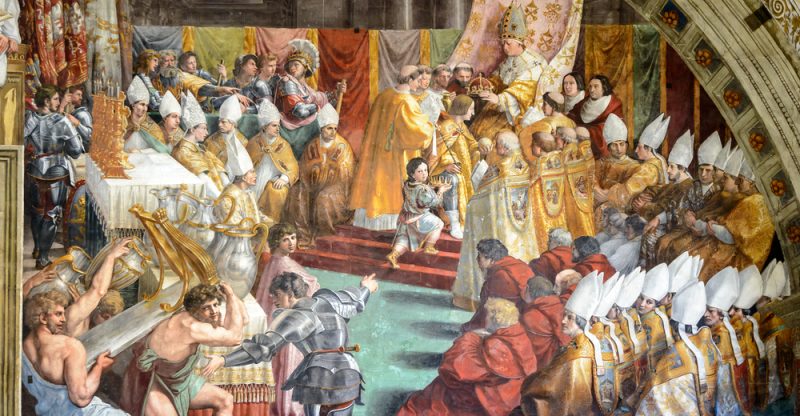
The Carolingian Empire It was a Franco-Lombard kingdom that existed between the 8th and 9th centuries AD. c. He tried to establish himself as the heir of the Western Roman Empire and sought to restore the greatness of that State. Its main ruler was Charlemagne, who was crowned emperor in 800 AD. C. by Pope Leo III.
The emperor had managed to prevail over the different local kings or lords, which is why the Carolingian Empire came to control a large part of Europe: the current nations of France, Germany, Austria, Switzerland, Belgium, Holland and northern Italy. However, with the death of Charlemagne, different nobles rebelled and confronted the government of Ludovico Pio or “the Pious” (778-840), son of Charlemagne.
Finally, Due to internal struggles for power, the Carolingian Empire ended up disintegrating. In the year 843, the Treaty of Verdun was signed and the territory was divided into three kingdoms: Western France, Middle France and Eastern France.
The Holy Roman Empire
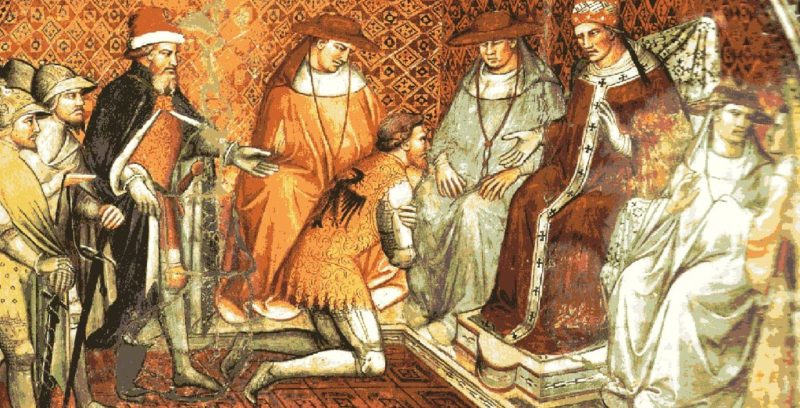
In the year 962 AD. C, a century after the disappearance of the Carolingian Empire, In Eastern France, King Otto I was crowned emperor and founded the Germanic Roman Empire. This State is also known as the First Reich or Old Empire and was a precursor to the later German empires.
King Otto I sought to recover the tradition of the Carolingian Empire and the ancient Roman Empire at the same time, and that is why he called his government the Germanic Roman Empire. In the 12th century AD. C., the adjective began to be included sacrum (“sacred”) in the name. Emperor Frederick Barbarossa officially defined this inclusion with the aim of consolidating the idea that he had a divine right to rule.
Throughout its history, the borders of the empire changed. In the 13th century it reached its greatest extent and was the largest political unit in Europe. It was made up of kingdoms, principalities, duchies and free cities. The emperor was the highest authority of all of them and was crowned by the Christian pope. However, the emperor's effective power was limited by the kings, princes and dukes who controlled their own territories.
Among the most important families that ruled the Holy Roman Empire were the Ottonids, the Hohenstaufen dynasty, and the Habsburg dynasty.
The Holy Roman Empire was the scene of several important events in European history, including the Investiture Quarrel (12th century), the Lutheran Reformation (16th century) and the Thirty Years' War (17th century).
At the beginning of the 19th century, it faced France in the Napoleonic Wars and was defeated. Emperor Francis II decided to dissolve his empire in 1806 to prevent Napoleon Bonaparte from seizing the title of Holy Roman Emperor.
The Byzantine Empire
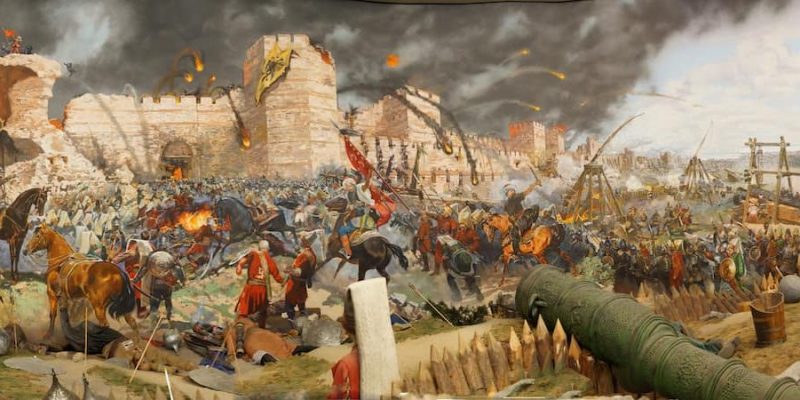
It is known as the Byzantine Empire. Eastern Roman Empire that was created in the year 395 AD. C., with the division of the Roman Empire. In 476 AD. C., the Western Roman Empire fell to the invasions of the Germanic tribes, but the Eastern Roman Empire maintained its political unity until 1453 AD. C., when it was defeated by the Ottoman Empire.
The Byzantine Empire considered itself the heir to the Roman Empire and its inhabitants called themselves romans, beyond the fact that Rome was under the power of peoples of Germanic origin. The names Byzantine and Eastern Roman Empire They are terms used by historians to differentiate this political entity from the one that had its capital in Rome during ancient times.
This empire was one of the most important political entities of the Middle Ages. It occupied the territories that today correspond to Türkiye and Greece, and at its greatest extent it included the eastern coast of the Mediterranean Sea and Egypt.
Byzantine civilization was characterized by having three fundamental influences: Greek culture, Eastern cultures and Christianity. In this sense:
- The use of Latin was replaced by Greek as the main language.
- The emperor took characteristic features of the eastern civilizations with which he shared his border and consolidated his power as a sacred figure.
- The imperial power became an autocracy: the emperor intervened in all matters and had maximum authority in matters of administration, army, legislation, religion and justice.
- The growing power of the Pope of Rome was rejected and the Orthodox Church was created, whose main authority was the Patriarch of Constantinople.
The Byzantine Empire had 77 emperors and three empresses. The most recognized emperors were Justinian I (527-565 AD), Heraclius (610-641 AD), Leo III (717-741 AD), and Basil I (867-886 AD). ).
During the 14th and 15th centuries, the empire went through different moments of crisis. Local government authorities began to have more and more power and more land. This affected the power of the central government, which had difficulty controlling the loyalty of local officials. In turn, the peasants became poorer and could not pay the taxes with which the imperial administration was supported. Consequently, the emperor could not continue to support the payment of his army.
Imperial weakness generated different struggles for power and civil wars. During the 15th century, the Ottoman Empire conquered parts of Byzantine territory until he defeated him definitively in 1453 AD. C and took the imperial capital of Constantinople.
The Ottoman Empire
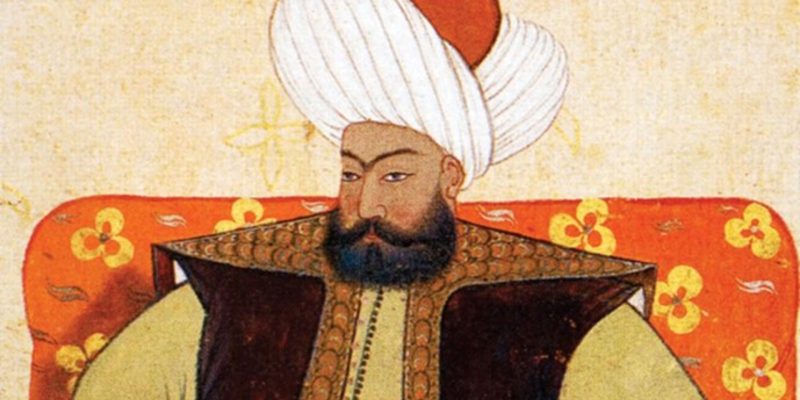
The Ottoman Empire It was a powerful multiethnic state that existed between 1299 and 1922 AD. c. At the end of the 13th century, the Turkish sultan Osman I expanded his territories by conquering neighboring peoples and founded the Osmanli dynasty, which ruled until the end of the empire.
At its greatest extent, the Ottoman Empire It came to occupy much of southeastern Europe, North Africa, and Western Asia. For centuries, it acted as an intermediary between Western Europe and Eastern Asia.
The Ottoman civilization had influences from different cultures. On the one hand, The Ottoman Empire was a multi-ethnic and multi-religious state. However, during the centuries of expansion Islam became the main religious faith. On the other hand, by conquering the Byzantine Empire, Ottoman culture inherited some features of its political, economic and social structure.
The highest ruler of the empire was the sultan and it was the only hereditary title. The rest of the rulers and government officials were appointed by each sultan. The imperial structure changed throughout its history, but in general it was divided into different provinces governed by a berlebey (governor), chosen by the sultan.
Between the 16th and 17th centuries, there were situations in which the legitimate heir was unable to rule because he was considered inept or too small. In this context, the legal mothers of the sultans (called Validate Sultan) acted as de facto rulers. This period is known as the “Sultanate of Women”.
During the 17th and 18th centuries, the Ottoman Empire sought to expand its territories in Europe and faced the Holy Roman Empire in repeated wars to the Russian Empire, to Venice and other European entities. However, his attempts failed and eventually caused him to lose some of his western territories.
In the 19th century, the growth of nationalist movements and democratic republican movements led to a series of internal crises of power, stability and economy. Towards the end of the century, the movement known as the Young Turks fought for the creation of a constitution, questioned central power, and weakened the political union of the empire.
During World War I (1914-1918), the Ottoman Empire joined the side of the Central Powers (the German and Austro-Hungarian empires). Upon being defeated, the victorious countries imposed the terms of peace and forced the Ottomans to disintegrate their empire.
References
- Ackerman, M., Schroeder, M.J., Terry, J. (Eds.). (2008). Roman Empire. Encyclopedia of World History, vol. 1: Prehistoric Era to 600 ce Facts on File.
- Ackerman, M., Schroeder, M.J., Terry, J. (Eds.). (2008). Byzantine Empire; Carolingian Dynasty; Holy Roman Empire; Ottoman Empire: 1299–1453. Encyclopedia of World History. vol. 2: The Expanding World. 600 ce to 1449. Facts on File.
- Ackerman, M., Schroeder, M.J., Terry, J. (Eds.). (2008). Ottoman Empire: 1450-1750. Encyclopedia of World History, vol. 3: The First Global Age. 1450-1750. Facts on File.
- O'Neill, D. I. (2023). Empire. Encyclopedia Britannica.
https://www.britannica.com/




